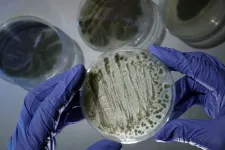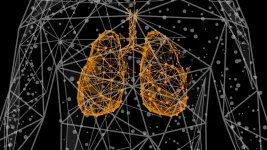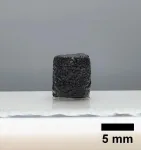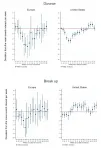Hidden genetic defects contain real risks for serious diseases
Genome test for consanguineous couples makes sense
2021-03-19
(Press-News.org) For the first time researchers from Hebrew University of Jerusalem, Radboudumc, Maastricht UMC+ and international colleagues have gained insight into the "hidden genetic defects" of the general European population. This is important because these defects, if inherited from both father and mother, can lead to all kinds of illnesses in their children. Research in the Dutch and Estonian population shows that every person has two to four such hidden genetic defects. In 1 in 100 couples, this leads to a situation with an increased risk of a genetic disease for future children. In the case of consanguinity, even 20 percent of the couples appear to be at high risk. This research is published in The American Journal of Human Genetics and Genetics in Medicine.
The genes of a every person are half maternal, half paternal. Therefor you have two copies of each gene. Sometimes one of those two copies is defective, without making you sick because the other gene still functions properly. In this case we call it a 'hidden genetic defect' (in scientific terms: an autosomal recessive gene). Such a hidden genetic defect can cause problems if a child inherits the same hidden defect, the same mutated gene, from both father and mother. Both parents are healthy and have never suffered from the hidden genetic defect. But when these two hidden genetic defects (maternal en paternal) come together in the child, the disease manifests itself.
Hidden defects in sight
How often such hidden genetic defects occur in the general population has been unclear. By screening all the genes of nearly 6,500 people in the Dutch and Estonian population researchers from Radboudumc and Maastricht UMC+ have now obtained insight into how often such hidden defects that can lead to disease are present in a single individual. Christian Gilissen, researcher at Radboudumc: "Every human being appears to have on average 2 to 4 such hidden genetic defects. Therefore the chance that a European couple is at risk of having a sick child due to two such defects is about 1 percent. The risk increases sharply in consanguineous couples. In a relationship of cousins, about sixteen percent of the couples are at high risk, with a particularly increased risks for skeletal disorders or intellectual disabilities."
Higher risk with consanguinity
In addition to this research, published in The American Journal of Human Genetics, research was also conducted in the hospital's clinical practice coordinated by Maastricht UMC+, together with Radboudumc and Amsterdam UMC. This study, published in Genetics in Medicine, addresses the question of risk determination of hidden genetic defects in cousin relationships prior to a desired pregnancy. Clinical Molecular Geneticist Aimee Paulussen of Maastricht UMC+: "We mapped the risk in 100 consanguineous couples. About 20 percent of these couples were found to have an increased risk of serious disorders in their offspring through these hidden genetic defects. These results from clinical practice confirm the data already found in the population study mentioned above."
Valuable testing
Professor Han Brunner, head of the Department of Clinical Genetics Maastricht as well as the Department of Genetics Nijmegen, is involved in both studies. He sees them as a clear incentive to make genetic testing available to couples with a possible increased risk because of such hidden genetic defects: "Certainly for these couples, this information can help them to make an informed decision when starting a family. They can consider pre-implantation diagnostics and IVF to allow selection of embryos without these defects."
INFORMATION:
*Paper published in The American Journal of Human Genetics: The landscape of autosomal-recessive pathogenic variants in European populations reveals phenotype-specific effects - Hila Fridman, Helger G. Yntema, Reedik Mägi, Reidar Andreson, Andres Metspalu, Massimo Mezzavila, Chris Tyler-Smith, Yali Xue, Shai Carmi, Ephrat Levy-Lahad, Christian Gilissen, Han G. Brunner
*Paper published in Genetics in Medicine: Diagnostic exome-based preconception carrier testing in consanguineous couples: results from the first 100 couples in clinical practice - Suzanne C. E. H. Sallevelt, Alexander P. A. Stegmann, Bart de Koning, Crool Velter, Anja Steyls, Melanie van Esch, Phillis Lakeman, Helger Yntema, Masoud Zamani Esteki, Christine E. M. de Die-Smulders, Christian Gilissen, Arthur van den Wijngaard, Han G. Brunner, Aimée D. C. Paulussen
ELSE PRESS RELEASES FROM THIS DATE:
2021-03-19
Aspergillus fumigatus kills as many people as malaria and tuberculosis, but is less known. It is found "everywhere", for example in the soil or in our compost, but is not normally dangerous to healthy people.
Those who die from it often have a poor immune system or are hospitalized for lung infections, such as covid-19.
Aspergillus also constitutes an increasing problem in agriculture, because the fungus causes deadly infections in both plants and animals. In the same way that many bacteria are resistant to antibiotics, also this fungus is now becoming more and more resistant to the limited repertoire of treatments. It is therefore important to find new ways to fight fungal ...
2021-03-19
March 19, 2021, Bristol, UK - A new peer-reviewed study published in the journal Toxicological Research & Application shows acute exposure of a 3D human bronchial tissue model to e-cigarette aerosol has minimal impact on gene expression compared to smoke from combustible cigarettes.
The research involved sub-cytotoxic exposure to cells in a 3D human bronchial model (MucilAirTM) to nicotine-containing vape aerosol, combustible cigarette smoke and fresh air control under strict laboratory conditions.
The highly sensitive Toxicity Testing in the Twenty-First Century (TT21C)-based technique allows researchers to gain a ...
2021-03-19
Approximately 8 out of every 10 health professionals in Spain are willing to be vaccinated against COVID-19, according to a study led by researchers from the Universitat Oberta de Catalunya (UOC). Published in the open-access journal Vaccines, the study assessed for the first time this population segment's willingness to be vaccinated against SARS-CoV-2 and concluded that the level of acceptance is higher among physicians than among nursing staff. Among the reasons given by health personnel for not wanting to be immunized, fears about the vaccines' safety and the potential side effects stood out.
Although vaccination is considered to the most effective method for preventing and eradicating viral infections and stopping ...
2021-03-19
The risk of being bullied at work is twice as high if you were born abroad. And if you come from a culture that is culturally dissimilar to Sweden's, the risk is even higher. These are the results of a Swedish study from Linköping University that was recently published in The International Journal of Human Resource Management.
Employers in Sweden have a duty to ensure that the workplace is safe, with a healthy atmosphere. Despite this, some employees are treated poorly, excluded and ignored. When such treatment has continued for a longer period, it is defined as bullying.
Researchers at Linköping University wanted to see if people born abroad run a greater risk of being bullied at work.
"Our results show an increased risk of bullying ...
2021-03-19
The headquarter of a eukaryotic cell is the nucleus, and most of the cell's information and instructions are stored there in the form of DNA (Deoxyribonucleic acid). The DNA, which is twisted, rolled and bundled two-meter-long chain, together with protein molecules, makes up the chromatin fiber that lays inside the nucleus. For years, scientists were curious how these components are organized. How is it possible that proteins necessary in biochemical reactions move efficiently within the nucleus full of DNA? Recent studies have finally solved the mystery. Findings describing it in detail were published in the Journal of Physical Chemistry Letters on December 21st, 2020.
Molecules ...
2021-03-19
Stay tuned for the hottest science in the prevention of heart disease at ESC Preventive Cardiology 2021, an online scientific congress of the European Society of Cardiology (ESC). The annual congress of the European Association of Preventive Cardiology (EAPC), a branch of the ESC, takes place 15 to 17 April online.
Preventive cardiology covers how to avoid first and subsequent heart attacks and strokes. It also includes sports cardiology, primary care, epidemiology and population science, basic and translational research, and rehabilitation after an event. Explore the scientific programme.
Novel research will be presented including new insights into the connections between diet, exercise, and cardiovascular health. How does shift work affect the body? And are there links between climate ...
2021-03-19
Solar energy is a clean, renewable source of electricity that could potentially play a significant part in fulfilling the world's energy requirements, but there are still some challenges to fully capitalizing on this potential. Researchers looked into some of the issues that hamper the uptake of solar energy and proposed different policies to encourage the use of this technology.
Installing solar panels to offset energy costs and reduce the environmental impact of their homes has been gaining popularity with homeowners in recent years. On a global scale, an increasing number of countries are similarly encouraging the installation of solar photovoltaics ...
2021-03-19
CHAMPAIGN, Ill. -- A camera-trap study in the Mendocino National Forest in Northern California reveals that black bears are adept at finding and stealing the remains of adult deer killed by pumas. This "kleptoparasitism" by bears, as scientists call it, reduces the calories pumas consume in seasons when the bears are most active. Perhaps in response to this shortage, the pumas hunt more often and eat more small game when the bears are not in hibernation.
The findings are published in the journal Basic and Applied Ecology.
Pumas, also known as mountain lions or cougars, are apex ...
2021-03-19
Due to their tissue-like mechanical properties, hydrogels are being increasingly used for biomedical applications; a well-known example are soft contact lenses. These gel-like polymers consist of 90 percent water, are elastic and particularly biocompatible. Hydrogels that are also electrically conductive allow additional fields of application, for example in the transmission of electrical signals in the body or as sensors. An interdisciplinary research team of the Research Training Group (RTG) 2154 "Materials for Brain" at Kiel University (CAU) has now developed a method to produce hydrogels with an excellent level of electrical conductivity. What makes this method special is that the mechanical properties of ...
2021-03-19
Google Trends reveal how searches related to family and relationship behaviors, such as weddings, contraception, and abortions, changed during lockdowns in the US and Europe.
INFORMATION:
Link to publicly available article: https://journals.plos.org/plosone/article?id=10.1371/journal.pone.0248072
Funding: The authors received no specific funding for this work.
Competing Interests: The authors have declared that no competing interests exist.
Article URL: https://journals.plos.org/plosone/article?id=10.1371/journal.pone.0248072
...
LAST 30 PRESS RELEASES:
[Press-News.org] Hidden genetic defects contain real risks for serious diseases
Genome test for consanguineous couples makes sense








